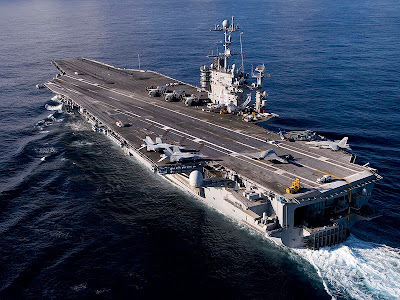Estimating Cost Savings for UCLASS
The past few years has seen a mostly uninformed tit for tat in the media and blogosphere regarding the costs of operating unmanned vehicles, especially when it comes to the personnel involved in operating and supporting them. Those favoring drones often overlook the back-end costs of analyzing large amounts of data gathered by persistent intelligence, surveillance, and reconnaissance missions. Those in support of manned aircraft discount the ability of single operators to control one or more autonomous aircraft, the fact that training and proficiency requirements are much lower for drone operators than manned aviators, and often mistakenly compare cost platform for platform rather than total time on station, or "orbits."
As the U.S. Navy plans significant investments in programs such as the UCLASS aircraft, additional analysis will need to be undertaken in order to develop more accurate long term budgets for these systems. Towards this end, Commander Gary Lazzaro, a student at the Naval Postgraduate School, conducted research to develop some more concrete estimates.
In his recent thesis entitled "Manpower Requirements Estimation For Unmanned Carrier Launched Airborne Surveillance And Strike Squadrons," CDR Lazzaro performed qualitative and quantitative comparisons of the operators, maintainers and squadron support required to run a notional future UCLASS squadron. The research looked at two scenarios: the squadron as a single deployable unit or a unit with a shore component and deployable detachments.
enlisted personnel.
CDR Lazzaro concluded that the manpower cost of a UCLASS squadron configured with five detachments would be $61.8 million a year less than the cost of five F/A-18F squadrons. Granted the capability and mission sets of these two platforms is not an apples for apples comparison, with each type of aircraft having pros and cons. But the analysis is an important first step in understanding future life cycle cost for aircraft which will make up a large portion of carrier flight decks within a few decades.
As the U.S. Navy plans significant investments in programs such as the UCLASS aircraft, additional analysis will need to be undertaken in order to develop more accurate long term budgets for these systems. Towards this end, Commander Gary Lazzaro, a student at the Naval Postgraduate School, conducted research to develop some more concrete estimates.
In his recent thesis entitled "Manpower Requirements Estimation For Unmanned Carrier Launched Airborne Surveillance And Strike Squadrons," CDR Lazzaro performed qualitative and quantitative comparisons of the operators, maintainers and squadron support required to run a notional future UCLASS squadron. The research looked at two scenarios: the squadron as a single deployable unit or a unit with a shore component and deployable detachments.
Lazzaro expects that both UCLASS squadron configurations would result in a smaller footprint and lower manpower requirements
than existing F/A-18F squadrons. The research recommended a UCLASS squadron configured with a shore component and five detachments, which has an estimated total manpower requirement for 103 officers and 540enlisted personnel.
CDR Lazzaro concluded that the manpower cost of a UCLASS squadron configured with five detachments would be $61.8 million a year less than the cost of five F/A-18F squadrons. Granted the capability and mission sets of these two platforms is not an apples for apples comparison, with each type of aircraft having pros and cons. But the analysis is an important first step in understanding future life cycle cost for aircraft which will make up a large portion of carrier flight decks within a few decades.


Comments
Post a Comment